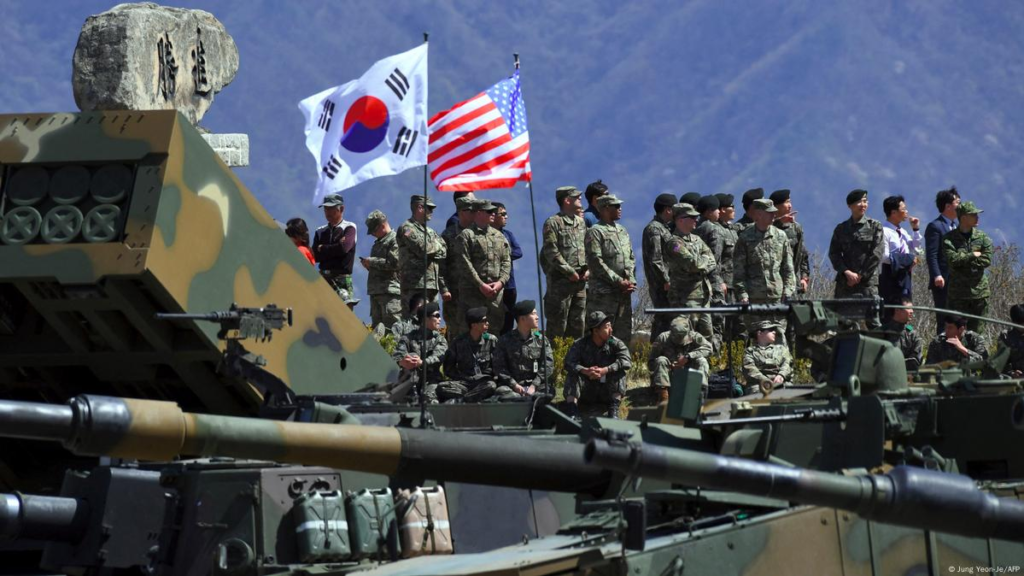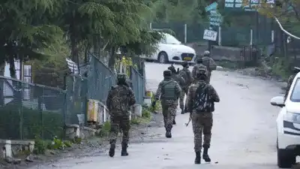A Show of Force: Examining the Implications of US-South Korea Joint Military Drills Amidst North Korean Tensions
The Korean Peninsula remains a volatile region, fraught with geopolitical complexities and simmering tensions. A recurring element in this dynamic is the joint military exercises conducted by the United States and South Korea, often taking place against a backdrop of escalating rhetoric and provocations from North Korea. These drills, while framed as defensive measures and demonstrations of alliance strength, carry significant implications for regional stability and the delicate balance of power in Northeast Asia.

The Rationale Behind the Drills: Security and Power Projection
The rationale behind these exercises is multifaceted. For South Korea, the drills serve as a crucial security guarantee against potential North Korean aggression. They symbolize the unwavering commitment of the US to its ally’s defense, reinforcing the deterrent effect against any perceived attack from the North. For the US, the exercises offer a platform to maintain military readiness in the region, projecting power and influence while also honing interoperability with South Korean forces. They are seen as essential for maintaining a strong posture against potential adversaries and safeguarding US interests in the region.
North Korean Perceptions: Hostility and Suspicion
However, North Korea views these drills with deep suspicion and hostility. They perceive them as rehearsals for invasion, further fueling their sense of insecurity and justifying their pursuit of nuclear weapons and ballistic missile programs. The exercises often trigger strong reactions from Pyongyang, ranging from fiery condemnations to missile tests and threats of military action. This pattern of escalating tensions and reciprocal provocations creates a dangerous cycle that undermines efforts towards dialogue and peaceful resolution.
Regional Implications: Impact on China and Beyond
The implications of these joint military drills extend beyond the immediate Korean Peninsula. They impact the broader regional dynamics, particularly concerning China. Beijing often expresses concerns about the scale and nature of the exercises, viewing them as a potential threat to its own security interests. The deployment of advanced US military assets in the region, even for defensive purposes, is perceived by some in China as an attempt to contain its growing influence. This can contribute to a climate of mistrust and potentially exacerbate existing tensions in the region.
Questions of Effectiveness: Deterrence vs. Provocation
Furthermore, the drills raise questions about their effectiveness in achieving their stated objectives. While they may reassure South Korea and demonstrate US resolve, they also risk further isolating North Korea and making it even more resistant to negotiations. Critics argue that the exercises can be counterproductive, exacerbating tensions and making it more difficult to find a peaceful solution to the Korean nuclear issue. They suggest that alternative approaches, such as diplomatic engagement and confidence-building measures, may be more effective in the long run.
A Delicate Balance and the Pursuit of Peace
In conclusion, the joint military drills conducted by the US and South Korea are a complex issue with far-reaching consequences. While they serve a crucial security function for South Korea and demonstrate US commitment, they also contribute to a cycle of escalating tensions with North Korea and raise concerns among other regional powers. Moving forward, it is essential to carefully consider the potential impact of these exercises and to explore alternative approaches that may be more conducive to dialogue, de-escalation, and the ultimate goal of achieving lasting peace and stability on the Korean Peninsula. The delicate balance between deterrence and provocation requires careful consideration and a willingness to explore all available avenues for peaceful resolution.










